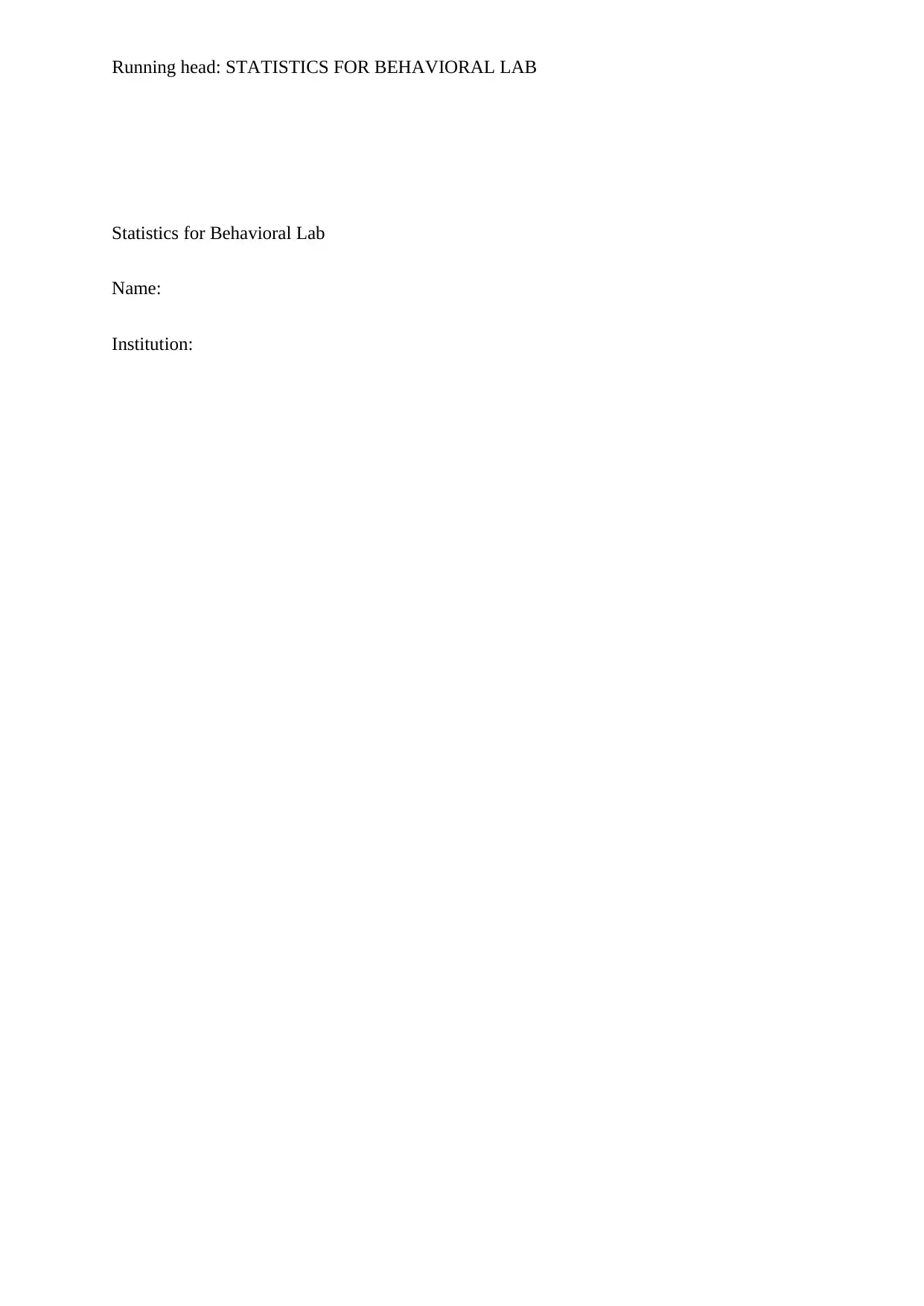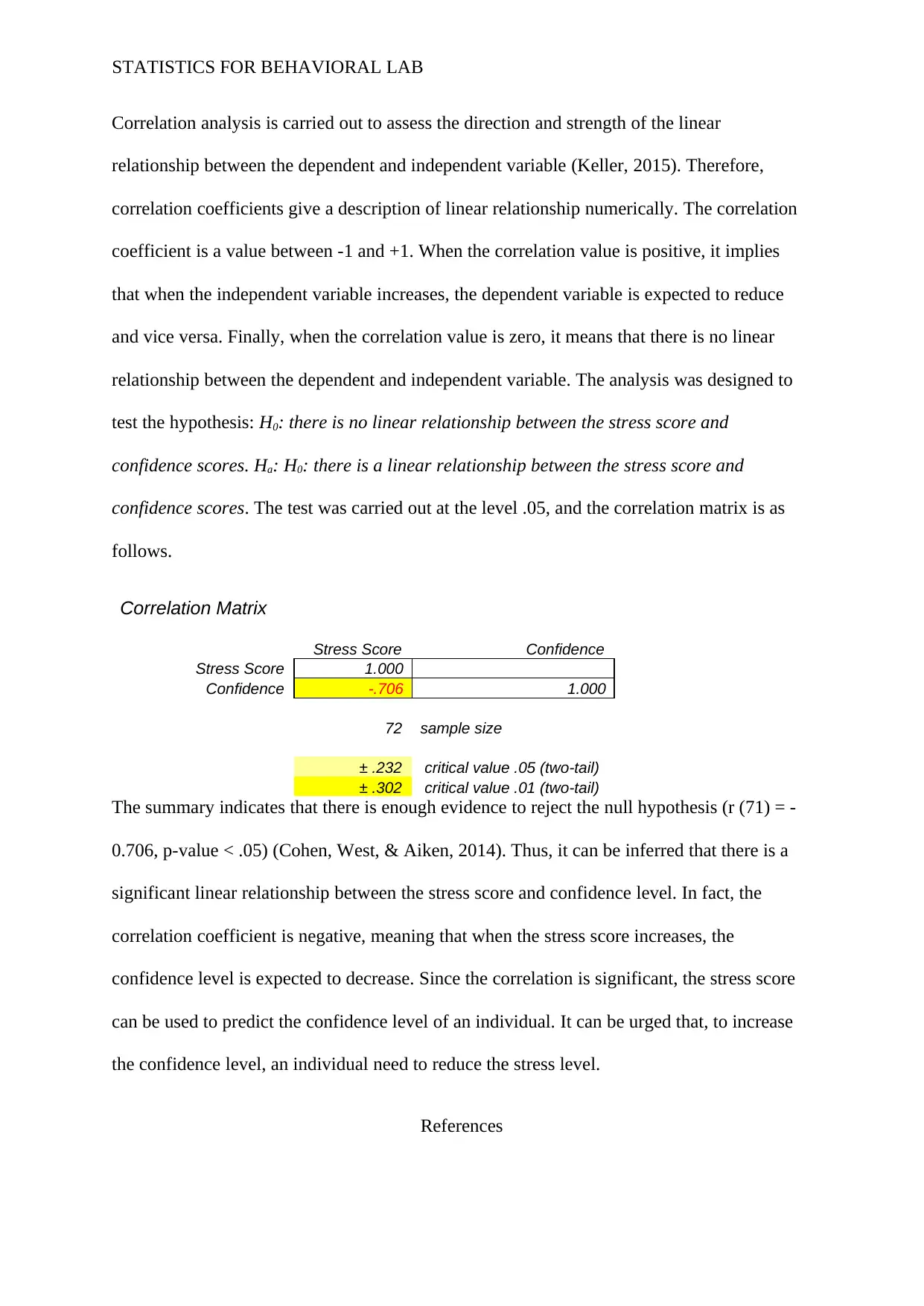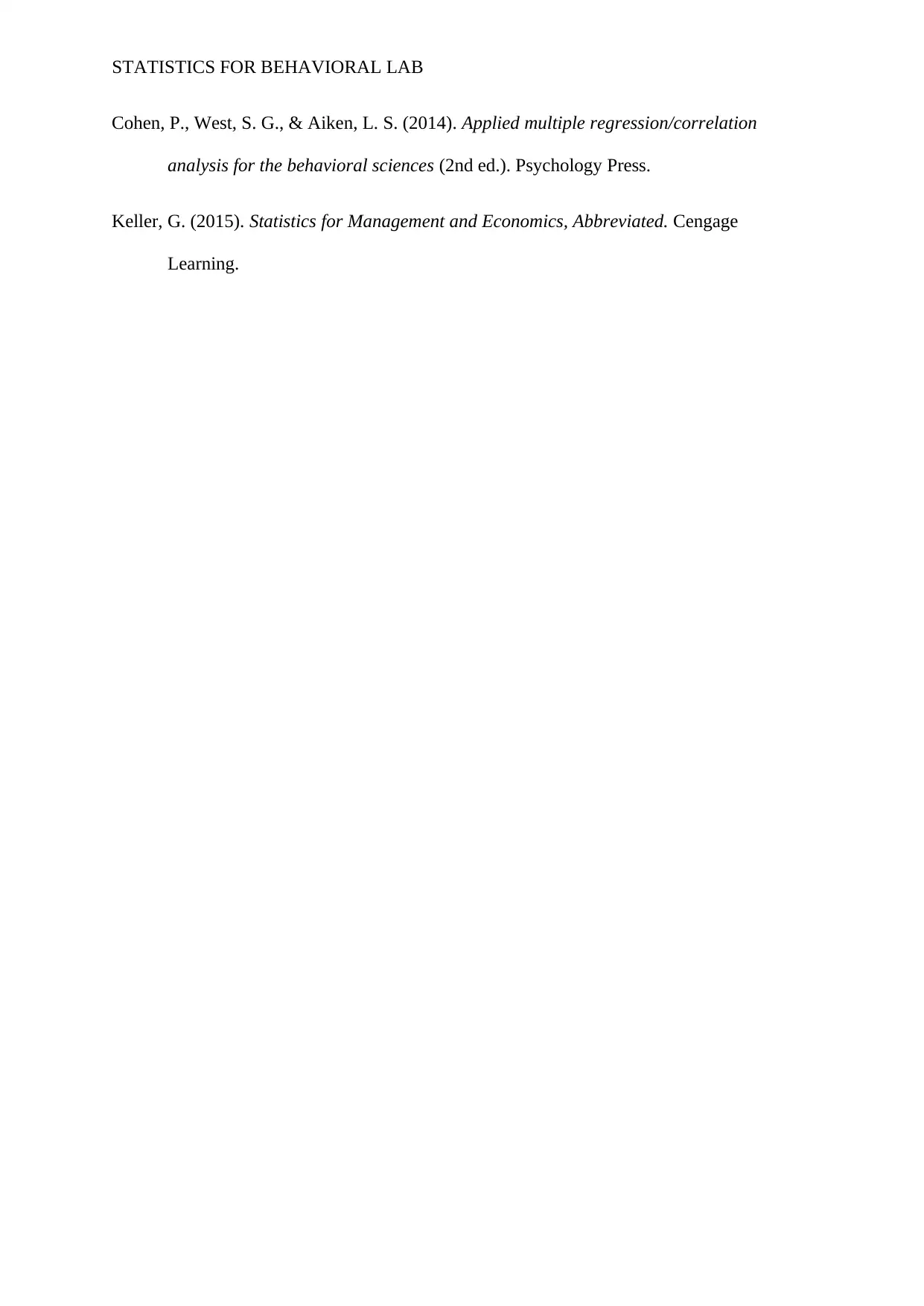Statistics for Behavioral Lab: Correlation and Confidence Analysis
VerifiedAdded on 2022/11/14
|3
|389
|54
Report
AI Summary
This report presents a correlation analysis conducted to assess the linear relationship between stress and confidence scores. The analysis aimed to test the hypothesis that there is no linear relationship between the two variables. The correlation coefficient, a value between -1 and +1, was used to describe the strength and direction of the relationship. The results, based on a sample size of 72, indicated a significant negative correlation (r (71) = -0.706, p-value < .05), leading to the rejection of the null hypothesis. This suggests that as stress scores increase, confidence levels tend to decrease. The report concludes that stress score can be used to predict confidence level, and reducing stress may increase confidence. The report references key statistical resources and data analysis to support the findings.
1 out of 3










![[object Object]](/_next/static/media/star-bottom.7253800d.svg)